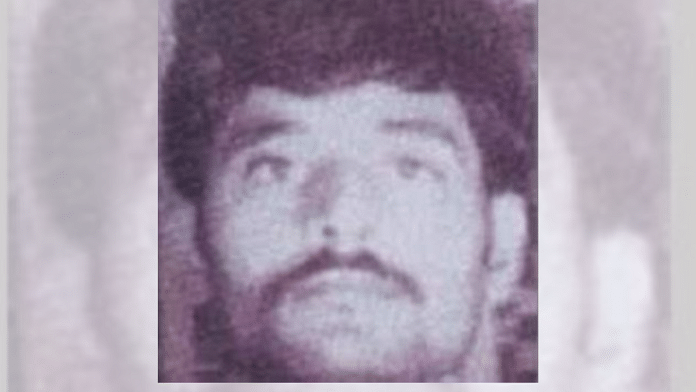Just a few years ago, such an outcome would have been unthinkable, as security forces struggled to access the area due to its difficult terrain and the lack of support from the local tribal population. But over the past two years, the establishment of security camps inside the region and sustained anti-Maoist operations have significantly weakened this once-impregnable stronghold.
The operation, hailed as the most successful anti-Naxal action in recent times, undoubtedly dealt a significant blow to the top leadership, striking at the very spine of the Naxalite movement.
The government’s strategy to render the Maoist movement headless through sustained operations—such as the one in the Karegutta Hills on the Chhattisgarh-Telangana border, which resulted in the killing of 31 Maoists, including 16 women, and completely dislocated their top leadership—appears to be working. This aligns with its goal of achieving a “Naxal-free Bharat” by March 2026.
Data show that there was a 57 percent increase in Naxals killed in operations by security forces over the last two years. In 2023, 58 Naxals were killed in operations; this number rose to 237 in 2024. In the first five months of 2025, until April, 201 Naxals have been killed in various operations.
Moreover, between 2004 and 2014, there were a total of 16,463 incidents of Naxal violence. From 2014 to 2024, the number of violent incidents decreased by 53 per cent, dropping to 7,744.
The number of Left-Wing Extremism (LWE)-affected districts also dropped—from 126 before 2014 to 90 in April 2018, 70 in July 2021, and further to 38 in April 2024. In April this year, Union Home Minister Amit Shah said the Naxal issue is now confined to just six districts, down from 12. These include four districts in Chhattisgarh (Bijapur, Kanker, Narayanpur, and Sukma), one in Jharkhand (West Singhbhum), and one in Maharashtra (Gadchiroli).
The movement is clearly on a downward spiral, but how soon will this lead to its collapse? The Maoists appear to be on the back foot—with the Central Committee reduced to half its strength, the Politburo down to just three members (all over 60 years of age), and no new recruitment of young cadres taking place.
These developments make Basavaraju ThePrint’s Newsmaker of the Week.
Basavaraju was among the few in the Maoist hierarchy to be a member of all three top bodies—the Central Committee, the Politburo, and the Central Military Commission—of the banned outfit.
After Ganapathi suffered from prolonged illness, Basavaraju was elevated to the topmost position in the Maoist hierarchy as general secretary of the CPI (Maoist) in 2018.
He headed the Central Military Commission for nearly a decade and led cadres during the most violent periods of Maoist attacks on security forces in central India between 2005 and 2013, including the Dantewada attack of 2010 in which 76 CRPF personnel were killed. He was also suspected to be the chief conspirator behind the May 2013 ambush on a convoy of Congress leaders in which 29 leaders, including Chhattisgarh unit chief Nand Kumar Patel, were killed in the Darbha Valley.
Born into a farmer’s family in Jiyannapetta village of Andhra Pradesh’s Srikakulam district, Basavaraju was one of five children. While his family was primarily engaged in farming, he went on to pursue a Bachelor of Technology in Chemical Engineering from the Regional Engineering College, now the National Institute of Technology, Warangal.
It was during this time that he came into contact with cadres of the Radical Students Union, a frontal organisation of the CPI (Maoist).
According to sources in the security establishment, besides providing ideological leadership, he soon rose through the ranks for his militarily aggressive strategies, with a focus on guerrilla and mobile warfare and strengthening the PLGA (People’s Liberation Guerrilla Army).
“He was an expert in explosives, IEDs, military formations, and attacks on police stations,” a senior police officer said.
“What made him important was also his key role in the unification of the erstwhile groups—the People’s War Group (PWG) and the Maoist Communist Centre of India (MCCI)—to form the CPI (Maoist) in 2004,” the officer added. “He played a major role in building the Maoist party and its military wing.”
The officer also said that Basavaraju was the chief conspirator behind nearly all major Maoist ambushes against security forces over the last two decades.
“This is a big blow to them as it makes the cadres headless. With no new recruitment happening and older leaders being taken out, this development comes as a huge success in weakening the movement,” the officer said.
Besides Basavaraju, two other key leaders—Prayag Manjhi alias Vivek Da and Ramachandra Reddy alias Chalapathi—were also killed in operations in 2025.
While Manjhi controlled the Parasnath Hills area and was a state-level commander considered the “successor” to CPI (Maoist) Politburo member Prashant Bose alias Kishan da (arrested in November 2021), Chalapathi was a Central Committee member who headed the Odisha State Committee of the banned outfit.
According to sources in the security establishment, what has worked in their favour—and helped shrink Maoist dominance, confining them to isolated—is the establishment of new security camps in vulnerable areas, coupled with the implementation of state development schemes.
“Besides launching effective operations, we have ensured the implementation of development schemes in Maoist-affected districts to promote holistic growth for the local population. As a result, there is significant local support for the forces, which has greatly weakened the Maoists’ areas of influence,” a senior officer explained. “Now, Aadhaar cards are being issued to tribals, healthcare is reaching remote interiors, and schools are being run by the forces—these changes have made a substantial difference,” the officer added.
This outreach has also contributed to improved intelligence gathering.
Another key factor behind the success of these operations is the role of the District Reserve Guard, which is composed of police personnel, surrendered Maoist cadres, and “Bastar Fighters”.
“These are local personnel who understand the terrain, speak the language, and are familiar with the tactics. That gives them a distinct advantage over forces deployed from outside. It’s a major reason for the recent operational successes,” the officer said.
With successive operations against the Maoists, the march toward ending Naxalism appears to be on track. However, to sustain these gains, security efforts must be complemented by effective policies and political outreach to tribal communities.
For a lasting solution to the Naxal problem, sustained operations must be accompanied by focused administrative efforts to bridge the long-standing development gap and ensure that essential services reach these historically neglected regions.
Views are personal.
(Edited by Prashant)








